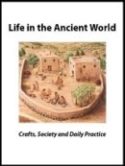Jeffrey Zorn presents some of Raymond Weill’s early-20th-century plans from his Jerusalem excavations in “Is T1 David’s Tomb?” in the November/December 2012 BAR. Take a closer look at Weill’s detailed drawings in the Bible History Daily exclusive “King David’s Tomb–A Closer Look.” Zoom in on pictures from the magazine, and get a fresh look at additional web-exclusive photographs, plans and drawings.
Nearly a century ago, French archaeologist Raymond Weill excavated what he identified to be tombs in Jerusalem’s City of David—perhaps the royal necropolis of the earliest Old Testament kings. Some scholars have since disputed this claim, but an examination of the evidence by archaeologist Jeff Zorn suggests that Weill might well have been right.
Although King David’s tomb has been erroneously identified with a location on Jerusalem’s Mt. Zion since the days of the Jewish historian Josephus (first century C.E.), earlier Biblical references make it clear that David and many other Old Testament kings were buried near the southern end of the City of David in ancient Jerusalem. But where exactly? Jeff Zorn believes we may already know.

Archaeologist Jeff Zorn believes these two quarried-out tunnels in the City of David may have once held the remains of the earliest Old Testament kings of ancient Jerusalem.
Nineteenth-century diplomat and explorer Charles Clermont-Ganneau believed the circuitous path of Hezekiah’s Tunnel offered a major clue. Clermont-Ganneau suggested the looping semicircular path followed by Hezekiah’s Tunnel towards its southern end was dug to avoid disturbing the burial grounds of the ancient Jerusalem kings that lay above. Within a couple of decades, Baron Edmond de Rothschild had purchased land in this area of the City of David to test the hypothesis through excavation.
Weill directed excavations on Baron Rothschild’s City of David property in 1913–1914 and again in 1923–1924. Though the area was greatly disturbed by later quarrying, Weill discovered ancient walls, ritual pools, cisterns, a circular tower (now believed to be a columbarium) and, most remarkably, nine rock-cut features that he identified as “tombs.” Weill interpreted the three most prominent tombs (labeled T1–T3) to be part of the royal necropolis of the Old Testament kings of ancient Jerusalem.

The parallel rock-cut tunnels Weill labeled T1 and T2 are still the most imposing of the “tombs.” T1 is about 54 feet long, 8 feet wide and 6 feet high. T2 is about 28 feet long, although evidence suggests it may originally have been much longer. While both tunnels are relatively simple and unadorned, T1 was divided into two levels, with the upper including a 6-foot-long rectangular depression at its far end that could have held the body or sarcophagus of the deceased.
So are these tunnels the remains of the royal Davidic necropolis of ancient Jerusalem?
Most scholar have remained unconvinced, pointing out that several features of the tunnels indicate they were more likely used as domestic cisterns or basements during the Second Temple period. But, as Jeff Zorn argues, even if these features were modified and reused during the Second Temple period (by which time any memory of where David and his descendants were buried had long since faded), this does not preclude the possibility of their original function as ancient Jerusalem royal tombs.
Those who reject Weill’s interpretation also point out that prominent Jerusalem families were able to commission much more elaborate First Temple period tombs, many of which have been found. Why then would Judah’s Old Testament kings have been buried in such simple, unadorned sepulchers?
Jeff Zorn argues that the plain tombs discovered by Weill are much more characteristic of the relatively simple royal tombs known from Late Bronze and early Iron Age sites throughout the Near East. As such, Weill’s tombs very well could be the tombs of Jerusalem’s earliest Old Testament kings, whose final resting places would have been made to look like the royal tombs of their contemporaries.
To continue learning about the ancient Jerusalem tombs discovered by Weill, read Jeffrey Zorn’s “Is T1 David’s Tomb?,” Biblical Archaeology Review, November/December 2012.
To view web-exclusive details of the site, visit “King David’s Tomb–A Closer Look.”
A version of this post first appeared in Bible History Daily in 2012.
Members, read more in the BAS Library:
Who Built the Tomb of the Kings?
Not a BAS Library or All-Access Member yet? Join today.
The post Where Were the Old Testament Kings of Ancient Jerusalem Buried? appeared first on Biblical Archaeology Society.


0 Commentaires